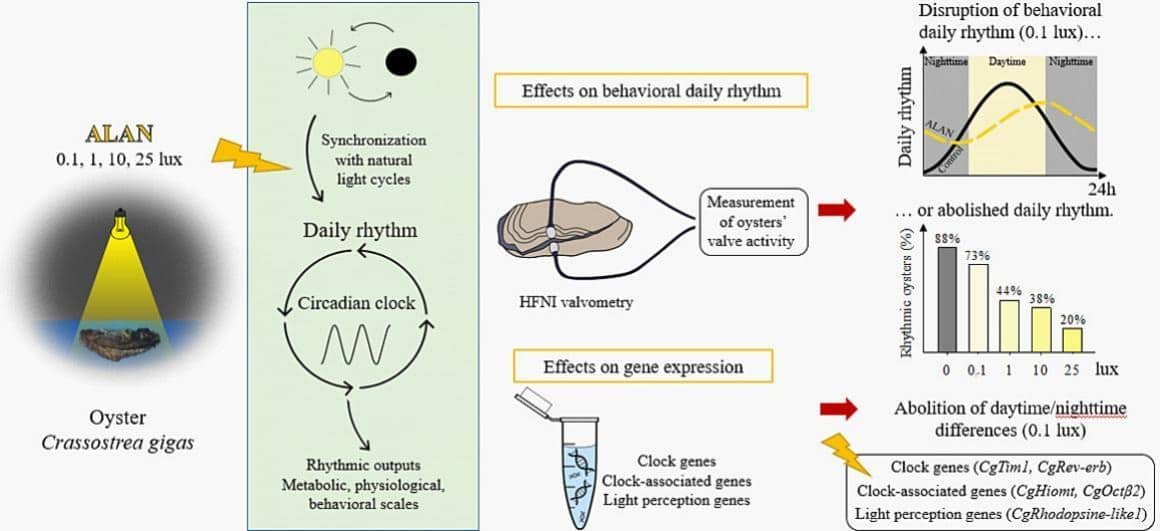
Audrey Botté, Laura Payton, Damien Tran
Univ. Bordeaux, CNRS, Bordeaux INP, EPOC, UMR 5805, F-33120 Arcachon, France
Abstract
Artificial Light At Night (ALAN) masks the natural light cycles and thus can disturb the synchronization of organisms’ biological rhythms with their environment. Although coastlines are highly exposed to this growing threat, studies concerning the impacts of ALAN on coastal organisms remain scarce. In this study, we investigated the ALAN exposure effects at environmentally realistic intensities (0.1, 1, 10, 25 lx) on the oyster Crassostrea gigas, a sessile bivalve subject to light pollution on shores. We focused on the effects on oyster’s daily rhythm at behavioral and molecular levels. Our results showed that ALAN disrupts the oyster’s daily rhythm by increasing valve activity and annihilating day / night differences of expression of circadian clock and clock-associated genes. ALAN effects occur starting from 0.1 lx, in the range of artificial skyglow illuminances. We concluded that realistic ALAN exposure affects oysters’ biological rhythm, which could lead to severe physiological and ecological consequences.
… S3) using a handheld spectroradiometer (Blue-Wave UVN-100, StellarNet Inc.). The control group was in the complete dark at night, with a light intensity inferior to the detection limit of …





